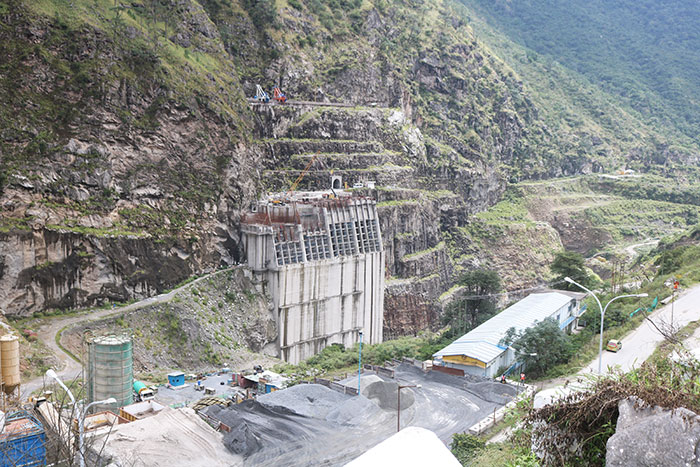Phurpa Lhamo | Wangdue
The Punatsangchhu Hydropower Project’s authority meet in two weeks will decide to construct either the dam at the current location or a barrage as an alternative to the dam, Kuensel sources said.
The authority is the highest decision-making body of the project with senior officials from both the governments as members and chaired by the Tengye Lyonpo (economic affairs minister) Loknath Sharma.
Sources also said that a barrage was likely to replace the dam due to the risks and instability issues at the right bank of the current dam.
Druk Green Power Corporation (DGPC) had also earlier studied a barrage site located 825 meters upstream of the present dam location on the Punatsangchhu. Building a barrage, however, means that the power generation capacity that was initially 1,200 megawatt (MW) would decrease.
In recent developments, the independent third party completed its review which began in July last year. Under DGPC’s direction, three agencies (European) studied the risks and possibilities of building a dam.
The review was completed in December 2020. Kuensel learnt that findings and reports by the third party have been submitted to the ministry.
The authority meeting will provide a clear way forward to the project, which was hindered with instability issues on the right bank of the dam site. Today, dam works have stopped.
Landslide on the right bank of the dam and the emerging geological issues
The right bank of the dam witnessed its first landslide in July 2013. This was followed by landslides in August 2016 and a recent one in January 2019.
Following the landslide on the right bank of the dam in 2013, the project’s consultant Centre Water Commission (CWC) of India submitted a holistic report. The CWC filed its report on strengthening measures in October 2019 and the design in December.
The National Hydroelectric Power Corporation (NHPC), a party who reviewed the report, had differing views on the report and the design. NHPC has pointed out flaws in the design stating that the factor of safety wasn’t enough.
In its report, CWC stated that the factor of safety was 1.2 to 1.4. NHPC vetted the report and disagreed with it since the corporation’s estimate showed a factor of safety below 1.
According to international standards, for a dam to be built the safety factor should be at least one.
Due to differing opinions, the construction of the dam stopped. The two parties were advised to come to a consensus. However, at the 28th technical coordination committee (TCC) meeting held in May 2020, the issue was not resolved.
The government then initiated an independent review.


